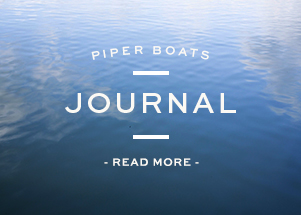– Lautrec to France –
Having travelled most of the canals and rivers including the tidal stretches of England and Wales, we decided that Europe was our next cruising area, not in our narrowboat Toulouse but in a new barge – which we obviously had to call Lautrec.
We spent the summer of 2014 getting used to our new boat whilst cruising up and down the Thames and making plans for our European escapade.
Crossing the English Channel in our own boat as opposed to a ferry was our biggest concern. However, we were very fortunate in meeting up with Roger who apart from being a Master Mariner and RYA examiner was also senior captain on cross channel ferries. He is the person that persuaded us to cross the River Mersey in our boats a couple of years ago and he was delighted to be our pilot for the Channel crossing.
So, we made the plans, stocked up with food, water and fuel and made our way to Kingston upon Thames where we were to meet up with Roger and his wife for the crossing. Roger would bring all of the necessary Admiralty Charts, tidal charts and a computer navigation system. So all we needed was good weather.
There looked to be a good weather window from 6th May for a few days. Unfortunately, the Thames Barrier was closed on the morning of 7th, so we opted to set out on the 8th and fortune was with us as the weather window had moved on a couple of days.
We locked out from Teddington at 04:30 on 8th May and were cruising serenely past the Houses of Parliament at 07:00. We chose to leave on this early tide to avoid as many of the high speed ferries and trip boats as possible as they churn the London part of the Thames into a very uncomfortable waterway. Only two ferries were encountered and they caused us no problems.
When looking at a map, the Thames from London to the Medway does not seem very far. Don’t be fooled, it is a long way. Through the Thames Barrier (don’t forget to call them up to get permission to pass through) and then past Tilbury, Canvey Island and into the Medway.
We went a short way into the Medway and then turned into The Swale where we anchored at about 14:30 for the night opposite Faversham Creek. It was a lovely evening, really quiet and peaceful. That is until about 03:00 the next morning, when the tide and unfortunately the wind turned and we were tossed around quite a bit. No chance of sleeping, so we weighed anchor at 06:00 and set off continuing through The Swale along the south side of the Isle of Sheppy towards Whitstable. If you come this way, make sure that you have good charts and tide information as it is quite a narrow channel.
As we progressed further along the Kent coast and around the North Foreland, the wind and sea state picked up, especially as you come round towards the south. The forecast was for force 4 and it was about spot on! We did not use our sea sickness tablets, but it was certainly a bit of a roller coaster ride for a few hours as headed to Ramsgate Marina where we arrived at 10:30 and we moored up for the night.
Our mooring was on the first pontoon, just inside the harbour entrance, so we did get some movement from the tidal flows as well as the pilot boats and off-shore wind farm supply boats which zoomed past. Anyway, by the previous nights standards it was very calm and restful. As our scheduled departure from Ramsgate was 10:15 we had a leisurely start compared with the previous two days in order to take advantage of the prevailing English Channel tides, taking us down towards Dover and then later as we crossed the channel up towards Calais.
So off we went, out of the harbour, between the channel marker buoys, dodging the Sunday morning yachtsmen out to catch the wind and south along the coast. We kept reasonably close inshore, keeping inside the Goodwin Sands, taking the channel between the sand bars and the shore. Passing Deal and on towards Dover where we had to wait for three ferries to come out from the harbour before we could turn out to sea towards Calais. No chance of keeping up with them, just go in the direction of the one that was going to Calais.
Although the sea and wind were calmer than the previous day, there was still a fair amount of waves and swell and the wheelhouse windscreen wipers really came into their own again, keeping the screen clear of the spray coming over the bows.
At first it seems that you have the sea all to yourself and then the AIS starts to pick up quite a few ships travelling down channel to the west. It’s very easy to underestimate just how fast they travel (up to 20 knots was recorded on the AIS). After crossing the down channel route, it’s through the separation zone and into the up channel route where again quite a few ships began to appear, some apparently going to the same destination as us. We did not try to race them.
It seemed to take ages to close with the coast, but at last the entrance to the Port of Calais appeared. Getting closer, we called the port authorities and entered the harbour, keeping well to the west as the very large and unmissable sign indicates. We tied up against the sea wall until the lift bridge opened and we could enter Calais Marina.
It was Sunday afternoon and the place was deserted (closed on Sundays). So we tied up on the visitors moorings and gave the boat a really good wash down to remove all of the salt which has built up all over the boat. Whilst doing this, we checked the times for the lock opening onto the canal system, only to be told by the Port Authorities that the lock was out of action and it was not possible to go through – they thought that Gravelines would be OK..
So we got up early the next morning to get the 05:00 bridge and sea lock opening and go back out to sea to Gravelines.
The weather was much better – reasonably calm – as we headed north along the coast, after about an hour or so Gravelines appeared and we entered the long entrance way to the inner harbour. Here we met an English sailor who informed us that this lock was also out of action!!
So back out to sea again and on up the coast to Dunkerque. A great place to enter France, very welcoming and friendly. We followed a customs ship through the harbour and into Trystram lock where we needed to wait for about 30 minutes for it to operate. We then zigzagged through the unsignposted water basins to the lock onto the canal system which was open and set ready for us. No instructions about how to work the lock, but a big remote control hanging at the end of a retractable cable was spotted. A press of the button and it all began to happen. The gates closed, the water level dropped, the lower gates opened and we exited. We were in the French canal system at last.
Relaxing at last, we travelled along the Canal de Bergues and through two locks to moor up in Arques where our friend and pilot were to be collected in a couple of days. Just giving us time to check out the locality and to visit the old Fontinettes Boat Lift.
I don’t know if our planning, concerning the lock from Calais Marina into the canal system was at fault, but we did not find any information. We later met another boater in Arques who had come across the Channel the day after us and they experienced the same problem – so it wasn’t just us not having the correct information
We have subsequently been informed that both locks at Arques will be out of action from 1 – 21 June.
As neither Janet or I had any sea boating experience, we both had some doubts about the venture. However, even though we had a longer sea voyage than originally planned, the experience was great and the boat took it all in its stride. Even with the spray from waves coming right over the wheelhouse we did not get one drop of water inside the boat and although we rocked and rolled quite a bit, nothing moved or got broken.
So would we do it again? The answer must be YES and with any luck, with slightly better weather.







